- 176 years ago(20.04.1841)
 - Publication of the first in the history of literature, the detective story of Edgar Allan Poe's “The Murders in the Rue Morgue”- is a short story by Edgar Allan Poe published in Graham's Magazine in 1841. It has been recognized as the first modern detective story; Poe referred to it as one of his "tales of ratiocination". Two works that share some similarities predate Poe's stories, including Das Fräulein von Scuderi (1819) by E. T. A. Hoffmann and Zadig (1747) by Voltaire. The word detective did not exist at the time Poe wrote "The Murders in the Rue Morgue", though there were other stories that featured similar problem-solving characters. Das Fräulein von Scuderi (1819), by E. T. A. Hoffmann, in which Mlle. de Scuderi, a kind of 19th-century Miss Marple, establishes the innocence of the police's favorite suspect in the murder of a jeweler, is sometimes cited as the first detective story.Other forerunners include Voltaire's Zadig (1748), with a main character who performs similar feats of analysis, themselves borrowed from The Three Princes of Serendip, an Italian rendition of Amir Khusro's "Hasht-Bihisht". Poe may also have been expanding on previous analytical works of his own including the essay on "Maelzel's Chess Player" and the comedic "Three Sundays in a Week". As for the twist in the plot, Poe was likely inspired by the crowd reaction to an orangutan on display at the Masonic Hall in Philadelphia in July 1839.The name of the main character may have been inspired from the "Dupin" character in a series of stories first published in Burton's Gentleman's Magazine in 1828 called "Unpublished passages in the Life of Vidocq, the French Minister of Police". Poe would likely have known the story, which features an analytical man who discovers a murderer, though the two plots share little resemblance. Murder victims in both stories, however, have their neck cut so badly that the head is almost entirely removed from the body. Dupin actually mentions Vidocq by name, dismissing him as "a good guesser".
- Publication of the first in the history of literature, the detective story of Edgar Allan Poe's “The Murders in the Rue Morgue”- is a short story by Edgar Allan Poe published in Graham's Magazine in 1841. It has been recognized as the first modern detective story; Poe referred to it as one of his "tales of ratiocination". Two works that share some similarities predate Poe's stories, including Das Fräulein von Scuderi (1819) by E. T. A. Hoffmann and Zadig (1747) by Voltaire. The word detective did not exist at the time Poe wrote "The Murders in the Rue Morgue", though there were other stories that featured similar problem-solving characters. Das Fräulein von Scuderi (1819), by E. T. A. Hoffmann, in which Mlle. de Scuderi, a kind of 19th-century Miss Marple, establishes the innocence of the police's favorite suspect in the murder of a jeweler, is sometimes cited as the first detective story.Other forerunners include Voltaire's Zadig (1748), with a main character who performs similar feats of analysis, themselves borrowed from The Three Princes of Serendip, an Italian rendition of Amir Khusro's "Hasht-Bihisht". Poe may also have been expanding on previous analytical works of his own including the essay on "Maelzel's Chess Player" and the comedic "Three Sundays in a Week". As for the twist in the plot, Poe was likely inspired by the crowd reaction to an orangutan on display at the Masonic Hall in Philadelphia in July 1839.The name of the main character may have been inspired from the "Dupin" character in a series of stories first published in Burton's Gentleman's Magazine in 1828 called "Unpublished passages in the Life of Vidocq, the French Minister of Police". Poe would likely have known the story, which features an analytical man who discovers a murderer, though the two plots share little resemblance. Murder victims in both stories, however, have their neck cut so badly that the head is almost entirely removed from the body. Dupin actually mentions Vidocq by name, dismissing him as "a good guesser".

References:
1.Cornelius, Kay (2002), "Biography of Edgar Allan Poe", in Harold Bloom, Bloom's BioCritiques: Edgar Allan Poe, Philadelphia, PA: Chelsea House Publishers, ISBN 978-0-7910-6173-2;

***
- 151 years ago(20.04.1866) -
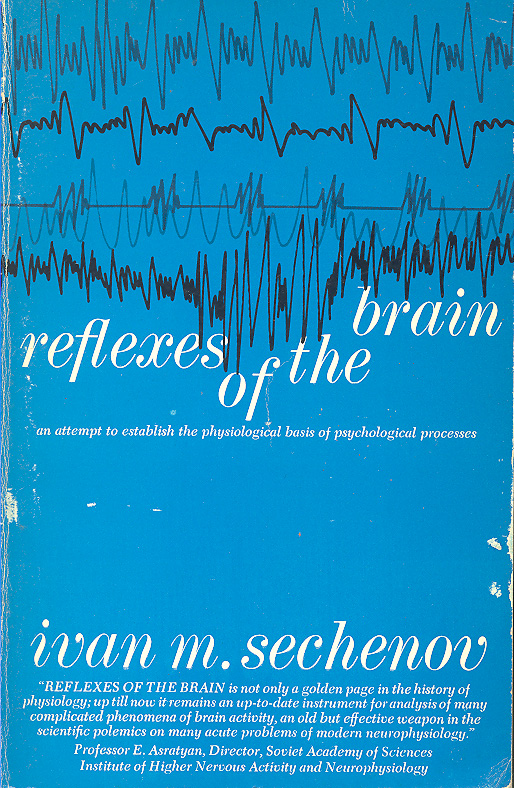 The publication of the book "Reflexes of the Brain" by I. M. Sechenov was suspended for "propaganda of materialism".
The publication of the book "Reflexes of the Brain" by I. M. Sechenov was suspended for "propaganda of materialism".
Little known in other countries and not generally available in English, I. M. Sechenov's “Reflexes of the Brain” was first published in Russia more than one hundred years ago, in 1863. The original title of the work, which failed to win the approval of the tsarist censor of that day, helps express the purpose of the book: An Attempt to Establish the Physiological Basis of Psychological Processes.
In Reflexes of the Brain, Sechenov (!829-1905) advanced ideas that were quite novel for the time: that psychological life is inconceivable without stimulation of the sense organs; the initial cause of any human action lies outside man, and without external sensory stimuli psychological activity is impossible for even a single moment. Sechenov advanced the bold proposition that the principal forms of psychological activity can be regarded as reflex processes; that all acts of conscious and unconscious life are reflexes. In his History of Experimental Psychology, Professor E. G. Boring writes: "Thus Sechenov... the Russian pioneer in reflexology... was far ahead of Western European thought on this matter."
Sechenov, besides discovering an inhibitory center in the brain (named after him) is important in yet other ways. Professor Asratyan labels Sechonov "the recognized father of Russian physiology" and also states that "Pavlov may be rightfully called Sechenov's disciple." The author of Cybernetics or Control and Communication in the Animal and the Machine, Norbert Wiener, and Sechenov. who wrote almost one hundred years earlier that "...to every naturalist the idea of the machine nature of the brain is a godsend," belong to the same intellectual tradition.

References:
1.I. M. Sechenov - “Reflexes of the Brain” – March 15, 1965;
2.Zusne, Leonard. 1984. Biographical Dictionary of Psychology. Westport, Connecticut: Greenwood Press. ISBN 0-313-24027-2;
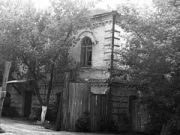 121 years ago (20.04.1896) - the library in Ust-Kamenogorsk was founded on the initiative of the Society for the Care of People's Education.
121 years ago (20.04.1896) - the library in Ust-Kamenogorsk was founded on the initiative of the Society for the Care of People's Education.
The library's initial collection consisted of books by progressive, progressive-minded townspeople and political exiles: O. Kostyurin, V. Gintovt-Dzevaltovsky, E. Mikhaelis, I. Emelyantsev, A. Fedorov, G. Wistenius, and others. On the title pages of the editions of the library of that time Stamp with the name "Ust-Kamenogorsk folk fee library with a reading room" and the date "1896".
By the beginning of the First World War in 1914. In the library there were about 2000 books. The circle of readers was also limited, since a fee of 50 kopecks was charged for use. In 1920, the library's library stock increased to 5000 copies. And the use became free. During these years the library occupied a new room with a reading room on the second floor of the drama theater, where it served readers until 1936. "The number of subscribers to the city's central library is growing and growing," the city newspaper noted on November 11, 1920, and also pointed to the "book starvation" in Ust-Kamenogorsk district.
The library owes its name to the active public of the city, which applied for the appropriation of the name of Alexander Pushkin to our library. On August 19, 1937, the presidium of the Ust-Kamenogorsk city council decided to assign the city's library the name of the great poet. And two years later the East Kazakhstan region was separated from Semipalatinsk and the library acquired the regional status.

During the Great Patriotic War and after it, the library was moved many times from one building to another, but its doors were constantly open to the public. On December 29, 1983 the library found its permanent place in the center of the city, where it is still located.
Now the library's book collection is more than 400 thousand copies. Readers have the opportunity to use all the achievements of new information technologies, media and Internet resources, literature in foreign languages, a large collection of encyclopedias, directories, dictionaries. The library actively cooperates with the embassies of the USA, France, Germany, the Open Society Institute, international funds "Eurasia", "Soros Kazakhstan", etc. The Library is rightfully the main information and cultural center of the East Kazakhstan region.

References:
1. Alekseenko N. There lived a man: (On P. Stolbov, the first librarian of the first library in the city of Ust-Kamenogorsk) // Rudny Altai. - 1978. - Sep. 7.;
2. East Kazakhstan Regional Library. A.S. Pushkin - 70 years (1896-1966). - Ust-Kamenogorsk. - 1966;
3. Mikheeva N. One hundred years in life: (On the jubilee evening of VK OUNB after AS Pushkin) // Rudny Altai. - 1996. - March 5;
4. Samoylova S. Our spiritual oasis: (On the work of VK OUNB after AS Pushkin) // Rudny Altai. - 1992. - Aug. 18.
5. Smirnova M.P. The Library. A.S. Pushkin is 55 years old. 6. The Bolshevik of Altai. - 1951. - Dec. 16.
7. Tokareva O. On the means of the intelligentsia and the townspeople: [To the 100th anniversary of the founding of the OUNB them. A.S. Pushkin] // Rudny Altai. - 1995. - May 4;
8. Chernykh S.E. The beginning put the fortress ...: Collection of essays and articles. - Ust-Kamenogorsk, 2004;
9. Black S. From the banks of the Irtysh. - Alma-Ata: Kazakhstan. - 1981;
10. Black S. Light of knowledge. - Kaz. true. - 1976. - June 20;
11. Shugrina Yu.F. The oldest in the region: The Library. A.S. Pushkin // Rudny Altai. - 1985. - 26 Sept.
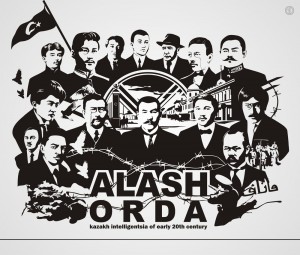 87 years ago (20.04.1930) - more than 20 members of the Alash movement, led by Mukhamedzhan Tynyshbaev, Mukhtar Auezov, Ualikhan Omarov, Bilyal Suleev, and Alimkhan Yermekov were released due to the decision of the OGPU, given the terms of their imprisonment during the preliminary investigation.
87 years ago (20.04.1930) - more than 20 members of the Alash movement, led by Mukhamedzhan Tynyshbaev, Mukhtar Auezov, Ualikhan Omarov, Bilyal Suleev, and Alimkhan Yermekov were released due to the decision of the OGPU, given the terms of their imprisonment during the preliminary investigation.
It was the time of the mass repressions of the totalitarian regime, the creation of giant concentration camps - Karlag (Karaganda Special Camp), Dalny, Steppe, specifically for wives and family members of the "traitors of the homeland" - Akmola camp "Algeria". In the 30s and 40s, the forced deportation (deportation) of people on social and then national grounds developed. On the eve of the mass deportations, according to the 1939 census, there were 54.7 thousand Poles, 3.6 thousand Latvians, 808 Lithuanians, etc. in Kazakhstan. From 1941 to 1944, 34,973 Germans were deported to Kazakhstan on charges of aiding the fascists, a large number of Chechens and Ingush, as well as Balkarians and Meskhetian Turks. In October 1946, In the republic there were already 8,906,982 special settlers. " In total, in the 30 - 50's. In Kazakhstan, according to conservative estimates, 1,560,000 people, not counting the prisoners of the Gulag, were resettled. Approximately from 1920 to 1953. 110 thousand people were subjected to political repression (today about 96 thousand of them have been rehabilitated). Victims of Stalinist repression were all the peoples of Kazakhstan - representatives of more than 80 nationalities.
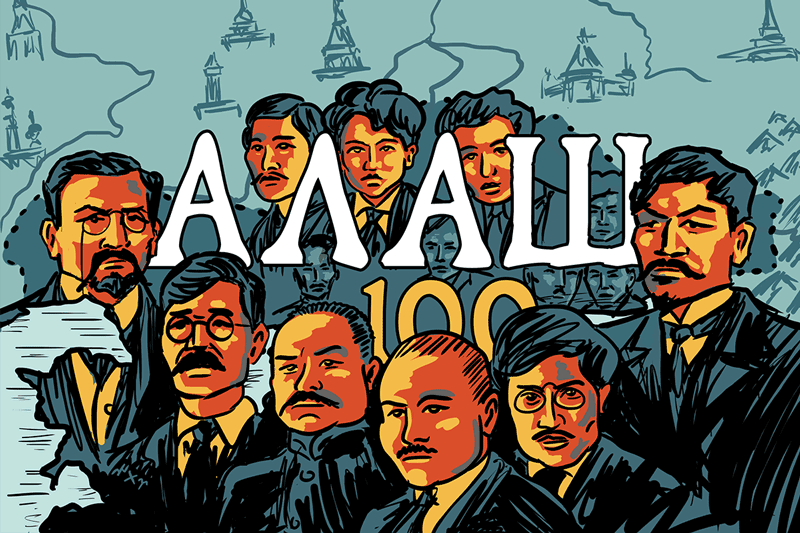
The color of the national intelligentsia, the so-called "bourgeois nationalists" - former leaders of Alash-Orda was physically destroyed: A. Bukeikhanov, A. Baytursynov, M. Zhumabayev, J. Aimauytov, H. and J. Dosmukhamedov. In all, 4297 people were subjected to repression, of which 2062 person was shot. In addition to the above, physically destroyed prominent state and public figures - T. Ryskulov, U. Jandosov, S. Sadvokasov, S. Seifullin, B. Mailin and others. The verdicts were often handed down by the so-called "troikas" of the NKVD, who, without trial, cracked down on disagreeable people.

Thus, in the late 20's - 30's. Socio-economic transformation in the province, success in the field of culture, science and education, giving Kazakhstan the status of a union republic, passed under the strict control of the totalitarian regime, which predetermined the further development of Kazakhstan within the USSR.
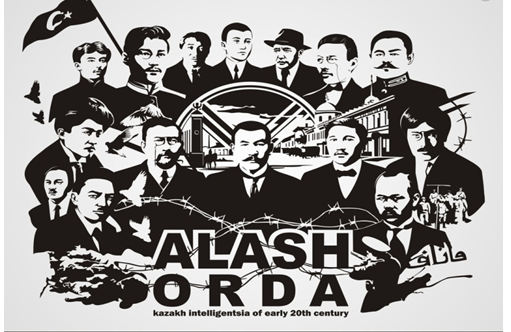
References:
1.Hasan Oraltay. The Alash movement in Turkestan. — London;
2.Бочагов А. К. «Алаш-Орда». Краткий исторический очерк о национально-буржуазном движении в Казахстане периода 1917-19 гг., Кзыл-Орда, 1927.
3.«Алаш Орда», сборник документов, сост. Н. Мартыненко, Кзыл-Орда, 1929 г. (Второе издание: Алма-Ата, «Айкап», 1992, предисловие К. Сарсекеева).
4.Аманжолова Д. Партия «Алаш»: история и историография, — Семипалатинск, 1993.
Аманжолова Д. Казахский автономизм и Россия. 5.История движения «Алаш», — Москва, 1994.
6.Нурпеисов К. «Алаш» и «Алаш-Орда», — Алматы, 1995.
7.Койгельдиев «Алаш козгалысы» (Движение «Алаш»), — Алматы, 1995.
8.Алашоведение // Казахстан. Национальная энциклопедия. — Алматы: Қазақ энциклопедиясы, 2004. — Т. I. — ISBN 9965-9389-9-7.
9.«Қазақстан»: Ұлттық энцклопедия / Бас редактор Ә. Нысанбаев – Алматы «Қазақ энциклопедиясы» Бас редакциясы, 1998 жыл. ISBN 5-89800-123-9;
10. Айбын. Энциклопедия. / Бас ред. Б.Ө.Жақып. - Алматы: «Қазақ энциклопедиясы», 2011. - 880 бет.ISBN 9965-893-73-Х;
11. Саяси түсіндірме сөздік. – Алматы, 2007. SBN 9965-32-491-3;
12. Қарағанды. Қарағанды облысы: Энциклопедия. - Алматы: Атамұра, 2006. ІSBN 9965-34-515-5;
13.Steven Sabol "Russian Colonization and the Genesis of Kazak National Consciousness", Palgrave Macmillan, 2003, pp. 143–144.
14.Peimani, Hooman. Conflict and Security in Central Asia and the Caucasus. Santa Barbara: ABC-CLIO, 2009, p.124
Galick, David.
15.Responding to the Dual Threat to Kazakhness: The Rise of Alash Orda and its Uniquely Kazakh Path, Vestnik: The Journal of Russian and Asian Studies (March 29 2014)
16.Zentrum für Türkeistudien (Hrsg.): Aktuelle Situation in den Turkrepubliken – Innenpolitik, Sicherheitspolitik, Wirtschaft, Umwelt und Bevölkerung, Working Paper 14, Önel-Verlag Essen, Juni 1994.
17.Roland Götz, Uwe Halbach: Politisches Lexikon GUS, Beck'sche Reihe, Verlag C.H. Beck München 1992, ISBN 3-40635173-5.
18.Erhard Stölting: Eine Weltmacht zerbricht – Nationalitäten und Religionen in der UdSSR, Eichborn Verlag 1990, ISBN 3-8218-1132-3.
19.Marie-Carin von Gumppenberg, Udo Steinbach (Hrsg.): Zentralasien. Geschichte – Politik – Wirtschaft. Ein Lexikon, Beck'sche Reihe, Verlag C.H. Beck München 2004, ISBN 3-406-51113-9.
20.Beyaz Arif Akbaş - “Alasch Orda”;
- 84 years ago(20.04.1933) - The publishing house "Young Guard" at the initiative of Maxim Gorky began the release of the series "The Life of Remarkable People." The first was the book "Heinrich Heine" by Alexander Deitch.

***
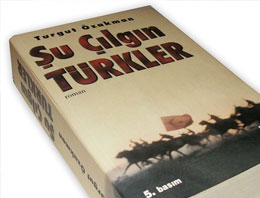 12 years ago (20.04.2005) - Turgut Özakman's book "Şu Çılgın Türkler" ("These Crazy Turks"), a book about the Turkish War of Independence, was published.
12 years ago (20.04.2005) - Turgut Özakman's book "Şu Çılgın Türkler" ("These Crazy Turks"), a book about the Turkish War of Independence, was published.
Turgut Özakman was a Turkish writer, a dramaturge, a civil servant and a lawyer. As a writer he produced many plays, novels, scenarios and drama researches. But his most notable works are three novels which are collectively known as Türkiye Üçlemesi ("Turkey Triplet"):
1)Şu Çılgın Türkler (These Crazy Turks) about Turkish War of Independence (published in 2005)
2)Diriliş Çanakkale 1915 (Resuscitation, Çanakkale 1915) about the Gallipoli Campaign (published in 2008)
3)Cumhuriyet Türk Mucizesi (Republic a Turkish Miracle) about the foundadion of Republican Turkey (published in 2009)
These novels (all more than 600 pages) are semi documentaries with sources, maps and archive photos. But to ease the reading a story of romance has been added to convert them to novel. Among them Şu Çılgın Türkler broke the sales records in Turkey in 2005. Up to 2013 there have been 311 impressions.

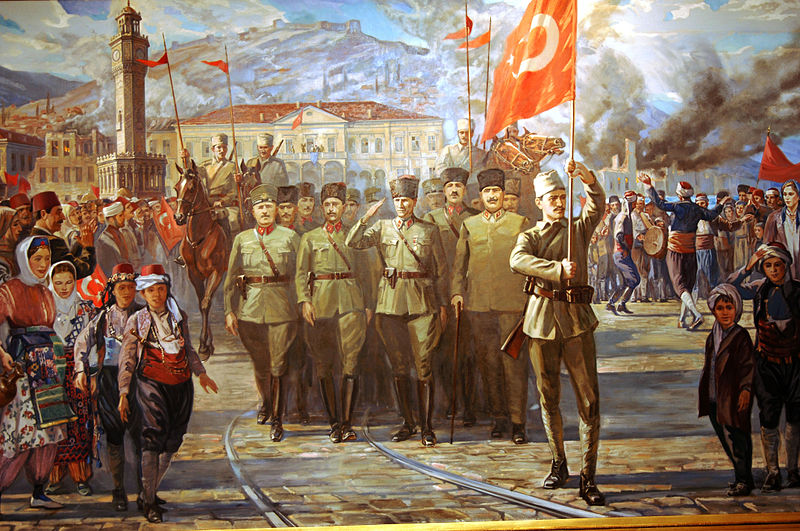
He was born in Ankara in 1930. In 1952 he graduated from the law School of Ankara University and served as a lawyer. After studying drama in the University of Cologne, he was appointed as a dramaturge in state theatre of Ankara (Turkish: Ankara Devlet Tiyatrosu). Later he also served in the Turkish Radio and Television Corporation (TRT) as a manager. Between 1983 and 1987 he was the general director in State Theatres. Between 1984 and 1994 he was the vice chairman of Radio and Television Supreme Council (RTÜK).
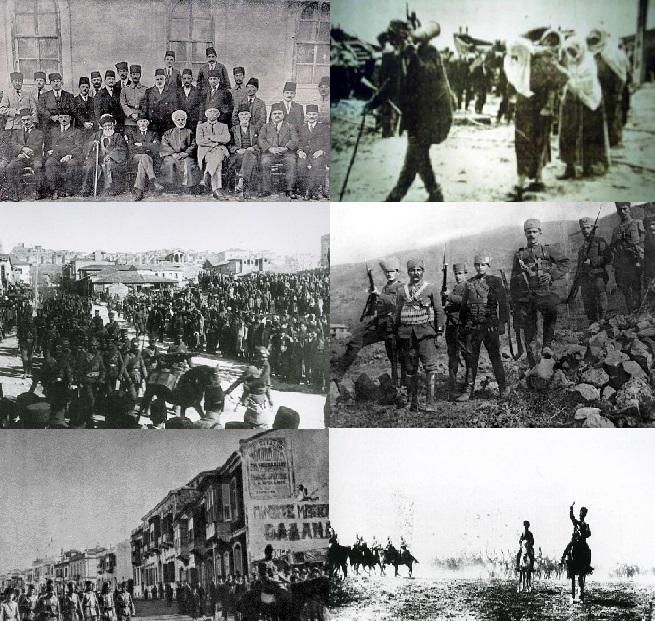

In 1999 he was awarded by the Presidency. In 2002 Eskişehir municipality named one of the public theaters in Eskişehir "Turgut Özakman stage". After 2006, Middle East Technical University, Süleyman Demirel University and Marmara University awarded Özakman.
References:
1.Turgut Özakman: Şu Çılgın Türkler, Bilgi yayınvi, Ankara, 2005, ISBN 978-975-22 0127 9;
2.Turgut Özakman:Diriliş Çanakkale 1915, Bilgi yayınevi, Ankara 2008, ISBN 978 975-22-0247 4;
3.Turgut Özakman: Cumhuriyet Türk Mucizesi, Bilgi yayınevi, Ankara , 2009 ISBN 978-975-22-0318-1;
4.Ateş Yalazan’s article called “Turgut Özakman'ı kaybettik”(“ We lost Turgut Özakman”) on internet newspaper Hurriyet.com.tr;
5. Article called “ Şu Çılgın Türkler Turgut Özakman”(“ These Crazy Turks by Turgut Özakman”) on internet newspaper Internethaber.com;

- 2007 On the First Channel the tele-premiere of the film Eldar Ryazanov "Andersen. Life without love. "

- 7 years ago (20.04.2010) - published a historical and journalistic book "Scorched by war. Kazakh front-line press ", in which author S. Kozybaev explores unknown pages of front-line journalism. The book presents rare and archival photographs and documents.

Front newspapers in the Kazakh language began to be published in November 1942. On the fronts of the Great Patriotic War and the Central Asian Military District, 42 newspapers and seven magazines were published in the languages of the peoples of Soviet Central Asia and Kazakhstan, of which 16 newspapers and two magazines were in Kazakh. In total, 4,500 military journalists worked during the war, more than 200 from Central Asia, and 72 from Kazakhstan.
During the Great Patriotic War 72 front-line journalists from Kazakhstan worked in front-line newspapers.
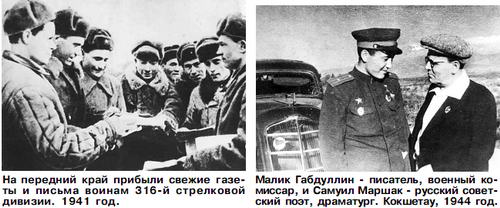

S.Kozybayev noted that front-line newspapers in the Kazakh language began to be published in November 1942. They were distinguished by a clear orientation, the materials were written in an understandable language for the fighters, bright and interesting. It was in these newspapers that Kazakhstan's military journalism arose and then strengthened. "A worthy place in it is the journalism of Baubek Bulkishev. He rose to the height of the All-Union recognition, his voice sounded throughout the country. His publicism found wide response among readers of the newspapers Pravda and Komsomolskaya Pravda. Baubeck is a symbol of a bygone war. Also, Baurzhan Momyshli, Kasym Kaisenov, Dmitry Snegin, Malik Gabdullin, Kalizhan Bekhozhin and others left an indelible mark in the history of military journalism, "the professor emphasized. - Unfortunately, today only three military journalists live among us: Azilkhan Nurshaikhov, Bisen Zhumagaliyev, Toleutai Aksholakov. "
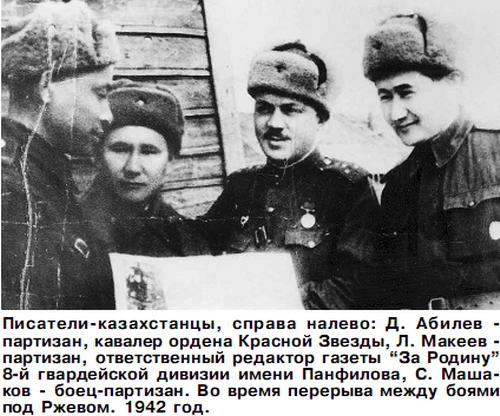
References:
1.S. Kozybaev’s historical and journalistic book "Scorched by war. Kazakh front-line press ";

- 7 years ago (20.04.2010) - unknown hypotheses about Noah's Ark, connected with the legends about Mount Kazygurt, are revealed in the book of the writer Qalaubek Tursinqulov "Kazygurt".


The author - a well-known publicist and writer - brought in his book information from travel notes of Chinese travelers who are valuable for their truthfulness and accuracy, noted in the preface of the book.
"On the ground Kazygurt, according to legend, Noah's Ark found shelter. This, of course, is one of the variants of world mythology, but this option has the right to exist. Especially since nowhere is documented the location of Noah's haven and its ark. So this version has the right to exist, "says Sauytbek Abdrakhmanov, the president of the preface to the book, the president of JSC" Republican newspaper "Egemen Kazakhstan".

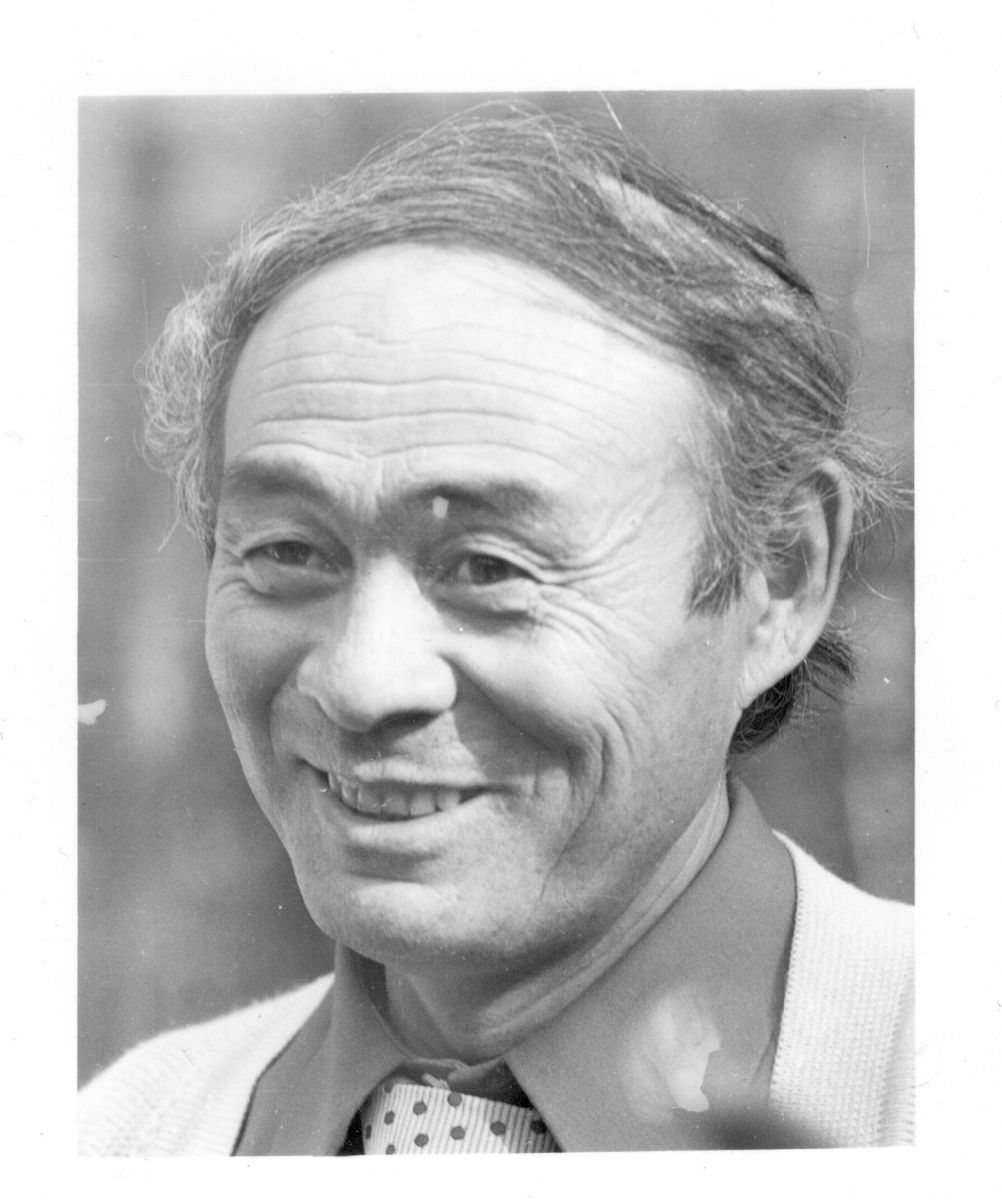
The book contains information on famous historical figures - the ruler of the Turkic kaganate Istemi, Shyngyshane, Aksak Temir, Alexander the Great, Tomiris, Abylaykhan and Tole bi. The biographies of these people are closely related to the events that took place in the Kazygurt region. The publication also describes the flora and fauna of this region, the socio-economic and cultural development of the Kazygurt region of the South Kazakhstan region.
References:
- Qalaubek Tursinqulov – “Kazygurt”;
***
 6 years ago (20.04.2011) the Kazakh diaspora of Moscow in the republican school "Zhas Ulan" named after S.Nurmagambetov presented the book "The Legendary Batyr", dedicated to the Hero of the Soviet Union Bauyrzhan Momyshuly. It contains archival data, materials that have never been published before, diary entries, essays and photographs of the Kazakh writer. Besides, on the pages of the book the authors collected memories of his brother-soldiers - Hero of the Soviet Union Malik Gabdullin and People's Writer of Kazakhstan Dmitry Snegin, as well as the good wishes of the Chairman of the Council of Veterans of Moscow Vladimir Dolgikh and the youngest daughter of Major-General Ivan Panfilov – Maryam Panfilova. The publication came out in the light of the centenary of the birth of B. Momyshuly with the support of the "Memory Foundation for the Fallen Soviet Warriors in East Prussia" Memory "-" Eskertkіsh қory "and Kazakhstani patrons.
6 years ago (20.04.2011) the Kazakh diaspora of Moscow in the republican school "Zhas Ulan" named after S.Nurmagambetov presented the book "The Legendary Batyr", dedicated to the Hero of the Soviet Union Bauyrzhan Momyshuly. It contains archival data, materials that have never been published before, diary entries, essays and photographs of the Kazakh writer. Besides, on the pages of the book the authors collected memories of his brother-soldiers - Hero of the Soviet Union Malik Gabdullin and People's Writer of Kazakhstan Dmitry Snegin, as well as the good wishes of the Chairman of the Council of Veterans of Moscow Vladimir Dolgikh and the youngest daughter of Major-General Ivan Panfilov – Maryam Panfilova. The publication came out in the light of the centenary of the birth of B. Momyshuly with the support of the "Memory Foundation for the Fallen Soviet Warriors in East Prussia" Memory "-" Eskertkіsh қory "and Kazakhstani patrons.
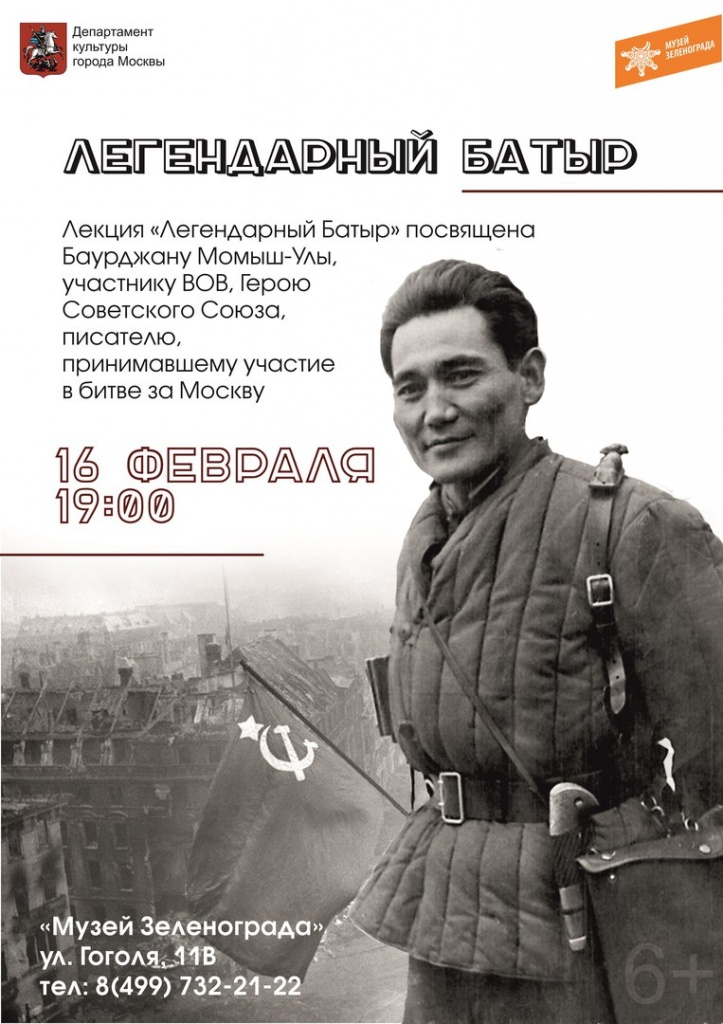
***
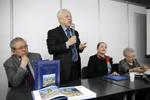 6 years ago (20.04.2011) - in Almaty in the framework of the VI International Book Exhibition "On the Great Silk Road" a unique illustrated encyclopedic edition - an album in three languages "Qazaqstan. Kazakhstan. Kazakstan. The book is based on materials compiled by the Republican Center for System Analysis and Forecasting. The idea belongs to the publishing house Almatykitap baspasy. It was supported by well-known journalists Valery Zhandauletov and Igor Romanov. Edition circulation - 10 000 copies. As the director of the State Children's Library named. S. Begalina Sofia Raeva, the book opens with the words of the President of Kazakhstan N.Nazarbayev about the future, that the country is confidently moving towards new horizons. "The publication is well thought out, each section and each chapter occupy its rightful place. First of all, this is a review of Kazakhstan's achievements for the years of independence, followed by a section on foreign economic activity, rare photos illustrate the stages that Kazakhstan has undergone, "S. Raeva noted. The largest enterprises of the country appeared in the years of independence. All this is reflected against the background of Kazakhstan's development strategy. "I was personally interested in the fact that I was able to reach every district where the structure was changed and to clarify all the data. In many editions the old names of the districts remained, in this book all the latest data on the population census, by names and abbreviations, etc. I think this book is an encyclopedic very useful publication, "said one of its authors V. Zhandauletov.
6 years ago (20.04.2011) - in Almaty in the framework of the VI International Book Exhibition "On the Great Silk Road" a unique illustrated encyclopedic edition - an album in three languages "Qazaqstan. Kazakhstan. Kazakstan. The book is based on materials compiled by the Republican Center for System Analysis and Forecasting. The idea belongs to the publishing house Almatykitap baspasy. It was supported by well-known journalists Valery Zhandauletov and Igor Romanov. Edition circulation - 10 000 copies. As the director of the State Children's Library named. S. Begalina Sofia Raeva, the book opens with the words of the President of Kazakhstan N.Nazarbayev about the future, that the country is confidently moving towards new horizons. "The publication is well thought out, each section and each chapter occupy its rightful place. First of all, this is a review of Kazakhstan's achievements for the years of independence, followed by a section on foreign economic activity, rare photos illustrate the stages that Kazakhstan has undergone, "S. Raeva noted. The largest enterprises of the country appeared in the years of independence. All this is reflected against the background of Kazakhstan's development strategy. "I was personally interested in the fact that I was able to reach every district where the structure was changed and to clarify all the data. In many editions the old names of the districts remained, in this book all the latest data on the population census, by names and abbreviations, etc. I think this book is an encyclopedic very useful publication, "said one of its authors V. Zhandauletov.

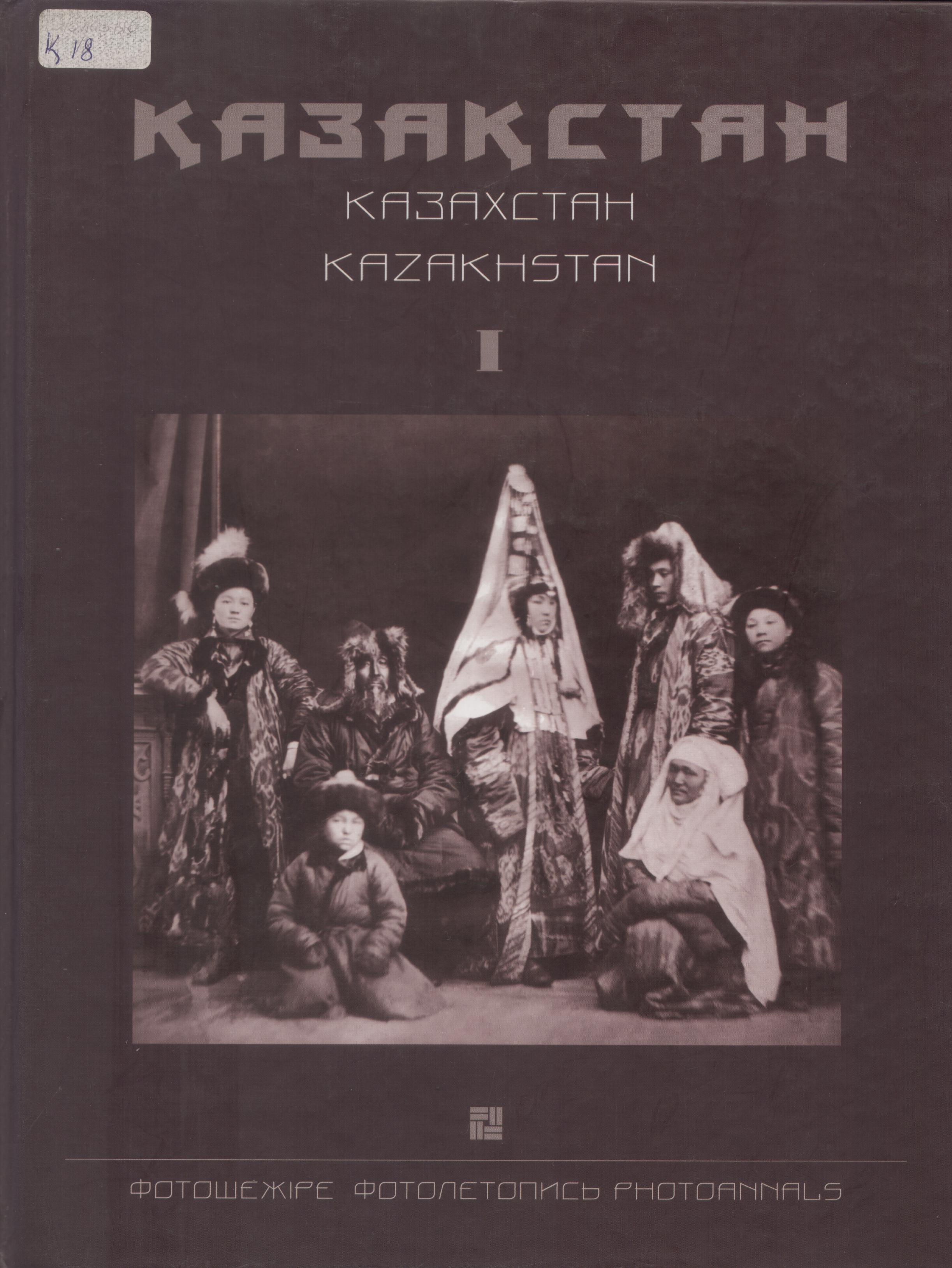
***
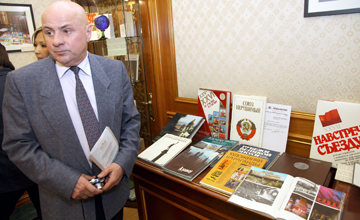 5 years ago (20.04.2012) - a unique exhibition "Reflections of the Epoch" opened in Astana. Its exhibits were books from the personal library of the Head of State Nursultan Nazarbayev. Workers of the Museum of the First President of the Republic of Kazakhstan for the first time decided to tell visitors what books the Leader of the Nation is reading. At the exhibition there are more than 200 works, of which a considerable part is occupied by fiction. Many books have notes, bookmarks made by the President himself. There are gifts from the statesmen of the Russian Federation of the early 1990s, as well as from cosmonauts of the USSR. In the exposition you can also see some rare specimens of the XIX - the beginning of the XX century. The oldest book in the collection is the Encyclopedic Lexicon of 1835 edition.
5 years ago (20.04.2012) - a unique exhibition "Reflections of the Epoch" opened in Astana. Its exhibits were books from the personal library of the Head of State Nursultan Nazarbayev. Workers of the Museum of the First President of the Republic of Kazakhstan for the first time decided to tell visitors what books the Leader of the Nation is reading. At the exhibition there are more than 200 works, of which a considerable part is occupied by fiction. Many books have notes, bookmarks made by the President himself. There are gifts from the statesmen of the Russian Federation of the early 1990s, as well as from cosmonauts of the USSR. In the exposition you can also see some rare specimens of the XIX - the beginning of the XX century. The oldest book in the collection is the Encyclopedic Lexicon of 1835 edition.
 4 years ago (20.04.2013) - on the initiative of the Chelyabinsk Regional Administration, the Kazakh Public Center "AZAMAT" with the assistance of the World Association of Kazakhs (WAK), the Akimat of Kostanay region held the Day of Kazakh Culture and Language in the Russian city of Troitsk, within the framework of which the opening of the plaque about publishing in 1911-1915 In Troitsk, the first Kazakh socio-political and educational magazine "Ayqap" under the editorship of the writer, poet and publicist Mukhamedzhan Seralin (1872-1929), a native of the Kostanay region.
4 years ago (20.04.2013) - on the initiative of the Chelyabinsk Regional Administration, the Kazakh Public Center "AZAMAT" with the assistance of the World Association of Kazakhs (WAK), the Akimat of Kostanay region held the Day of Kazakh Culture and Language in the Russian city of Troitsk, within the framework of which the opening of the plaque about publishing in 1911-1915 In Troitsk, the first Kazakh socio-political and educational magazine "Ayqap" under the editorship of the writer, poet and publicist Mukhamedzhan Seralin (1872-1929), a native of the Kostanay region.
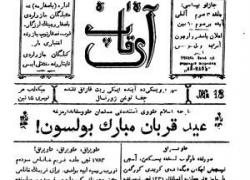

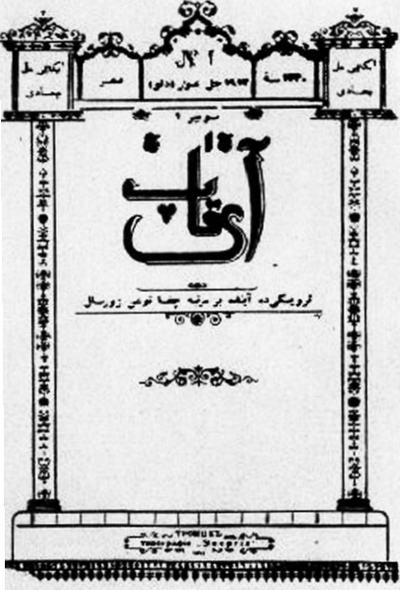

Author Akhan Tuleshov
adebiportal.kz - Literary Portal
To copy and publish materials, you must have written or oral permission from the editorial board or the author. A hyperlink to the Adebiportal.kz portal is required. All rights reserved by the Law of the Republic of Kazakhstan "On Copyright and Related Rights". adebiportal@qcontent.kz 8(7172) 64 95 58 (in - 1008, 1160)
The opinion of the author of the article does not represent the opinion of the editorial board.









